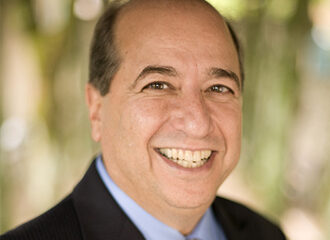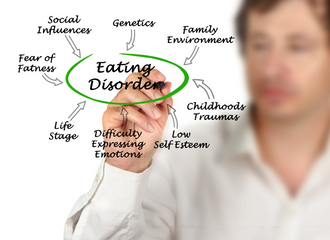Written by: Lillie Brody, MSEd, MHC-LP
Team Lead & Primary Therapist at The Renfrew Center of New York City
 Recognizing the differences between compulsive eating and binge eating disorder (BED) is vital for effective therapeutic treatment and recovery. Although these two behaviors share some similarities, they each present distinct challenges and require tailored approaches for healing.
Recognizing the differences between compulsive eating and binge eating disorder (BED) is vital for effective therapeutic treatment and recovery. Although these two behaviors share some similarities, they each present distinct challenges and require tailored approaches for healing.
Understanding the nuances of these two conditions is not only important for individuals affected by them, but also for healthcare providers, families, partners, and the supporters who play a crucial role in the recovery process. This blog will explore the key differences between compulsive eating and BED, emphasizing the importance of accurate identification and appropriate intervention to support lasting recovery.
Compulsive Eating
Compulsive eating refers to the habitual consumption of food typically for reasons other than physical hunger. It is often driven by emotional distress, boredom, stress, or the need for comfort.
Unlike eating disorders that are defined by a specific set of diagnostic criteria, compulsive eating is typically viewed as a behavior or behavioral pattern as opposed to a diagnosable disorder. People who engage in compulsive eating may find themselves eating when they are not hungry, and they may have difficulty controlling their intake once they begin eating. Emotional triggers, such as anxiety, sadness, or loneliness, can lead to these episodes, and food is often used as an attempt to cope with these experiences.
Although someone who engages in compulsive eating may not necessarily meet all of the criteria necessary for a formal eating disorder diagnosis, compulsions can still have significant effects on both physical and mental health. For some, compulsive eating can lead to various medical complications, such as increased blood sugar levels, elevated risk of heart disease, and gastrointestinal discomfort. Additionally, compulsive eating can negatively affect mental health, contributing to feelings of guilt, shame, social isolation, and low self-esteem. Over time, compulsive eating can become ingrained in a person’s behavior, making it harder to manage and potentially leading to decreased self-confidence and increased emotional distress.
Defining Binge Eating Disorder (BED)
BED is a clinically recognized eating disorder defined by recurrent episodes of consuming large quantities of food within a short period of time. These binge eating episodes are accompanied by a sense of loss of control, during which individuals feel unable to stop eating. Other characteristics may include eating rapidly even when not hungry, eating beyond the point of fullness, eating in secret due to feelings of embarrassment or shame, and feeling depressed, disgusted, or guilty after a binge eating episode.
Binge eating episodes are not followed by compensatory behaviors, such as purging or excessive exercise. This distinguishes BED from other eating disorders like bulimia nervosa. To be diagnosed with BED, these binge episodes must occur at least once a week for a period of three months and cause considerable emotional distress.
BED can affect individuals of any body shape or size, however research suggests that those who have experienced weight stigma may be at elevated risk. BED is a complex mental health condition, and a combination of emotional, social, cognitive, biological, and behavioral factors contribute to both its development and persistence.
BED can have serious physical and psychological implications. Physically, it is associated with digestive distress, metabolic strain, cardiovascular health, and sleep disruption. Psychologically, BED is often linked to co-occurring mental health issues, including depression, anxiety, ADHD, PTSD, substance use disorders, and low self-esteem. If left untreated, BED can lead to long-term health complications and significant emotional suffering.
READ MORE: 5 Long-Term Impacts of Eating Disorders: Physical, Mental & Social Consequences
Key Differences Between Compulsive Eating and Binge Eating Disorder
While compulsive eating and BED share some overlap, there are several important differences that set them apart. One of the primary distinctions lies in the quantity of food consumed and the frequency of eating. Compulsive eating may involve repeatedly overeating in a less structured manner, occurring intermittently rather than as part of a distinct binge episode. In contrast, BED is marked by recurrent binge episodes, where individuals consume large amounts of food within a discrete timeframe.
Another key difference is the sense of control during eating episodes. Individuals with BED report feeling a loss of control during binge episodes, which leads to feelings of powerlessness and distress. Compulsive eaters, on the other hand, may not experience the same intense loss of control; they may be able to stop eating or moderate their intake, even if they are eating for emotional reasons.
The emotional impact can also differ between the two conditions. BED includes a clinically significant level of distress. There are typically intense feelings of guilt, shame, or disgust after each episode and a very strong desire to stop bingeing. Compulsive eating, while still emotionally uncomfortable, may not provoke the same level of emotional intensity or psychological turmoil commonly experienced in BED.
Finally, BED is a diagnosable eating disorder that requires a professional diagnosis based on specific criteria, including the frequency and duration of binge episodes, as well as the emotional distress these episodes cause. Compulsive eating, however, is often seen as a behavior or a behavioral pattern rather than a formal eating disorder, although it can still have a significant impact on an individual’s wellbeing if left unaddressed.
Why Understanding These Differences Matters
Understanding both the differences and overlap between compulsive eating and BED is essential for clients, providers, and support systems alike. For those experiencing these symptoms, identifying whether their eating patterns align more closely with compulsive eating or BED can inform appropriate treatment options and guide them toward the right level of care.
For families and loved ones, understanding these differences can lead to better support. Family members who recognize the signs of BED can encourage their loved ones to pursue a timely diagnosis and seek out professional treatment. In both cases, understanding the complex emotional, sociocultural, and biological factors that may be contributing to these symptoms can reduce stigma and foster a more supportive environment for long-term recovery.
READ MORE: 8 Essential Eating Disorder Resources for Family Members
Encouragement for Seeking Help
If you or someone you know is struggling with compulsive eating or binge eating episodes, it is important to seek professional support. An accurate diagnosis is the first step toward receiving the appropriate treatment.
In Renfrew’s Unified Treatment Model (RUTM), we focus on fostering insight, practicing present-focused awareness, increasing emotional tolerance and improving cognitive flexibility—while actively moving away from secondary shame and self-judgment. This approach helps individuals better understand the emotions driving their behaviors and the various functions that disordered eating patterns—such as binge eating or compulsive eating—serve. Through the application of our evidenced-based approach, individuals are able to practice and increase their confidence in processing, understanding, and responding to complex emotional experiences in a way that honors their core values. By replacing emotion-driven behaviors with values-aligned actions, clients learn that recovery is not only possible—it can be a profoundly empowering journey toward emotional resilience, self-trust, and sustainable change.
Conclusion
In conclusion, while compulsive eating and binge eating disorder share similarities, they are distinct in important ways. Compulsive eating is a behavior often driven by emotional factors, while BED is a clinical eating disorder characterized by a set of symptoms, including recurrent binge eating episodes, loss of control, and marked distress.
Understanding these differences is crucial for individuals, families, and treatment providers to ensure that appropriate care and support are provided. Recovery is possible for both binge eating disorder and compulsive eating, and with the right treatment, individuals can reclaim their health and well-being. If you or someone you know is struggling, remember—you’re not alone. Recovery begins with the courage to reach out and take that first step.



